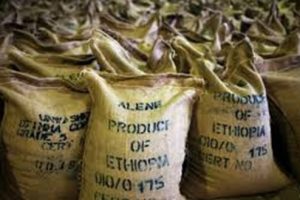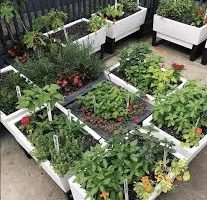Introduction : Ethiopia was once named a water tower of East Africa. In the late 19th century, the forest coverage of the country was about 30% and dwindled to less than 4% a century later due to land clearing for agricultural purposes, cutting trees for uses in construction, rising demand for fuel, furniture production, and wildfire that has radically changed the scenery of coverage and exposed the whole environment to water and wind erosions.
The highlands in the northern parts of the country were devoid of trees whereby the under soil rocks and stones came to the surface area and diminished the size of farmlands. Bare lands are exposed to drought, wind, and water erosions leading to the loss of fertile soils, which is equivalent to grains in storage.
The major causes of land degradations are anthropogenic activities including 1) clearing of vegetation cover (removal of vegetation), 2) bad farming systems (ploughing up and down ways), 3) lack of erosion control mechanisms (erosion plugs and terrace methods), 4) scarcity of windbreaks (lack of trees that have associative characteristics), 5) overgrazing (particularly over a small area of feed land), 6) lack of land reclamation and 7) negative acts against the natural law of the environment.
Nonetheless, awareness about environmental conservation and mobilization for afforestation practices has been improving among society and has initiated many individuals to support seedling plantation every year during Ethiopia’s rainy season.
In view of this, the compiled report of the World Bank (2016) shows about 12.54 % of the forest area of Ethiopia has been rehabilitated as a result of afforestation and reforestation activities. Reports on tree planting activities for the last decade provide hope although there is divergent between the reality on the ground i.e between the number of seedlings planted and the area of coverage.
Anyone can find out the difference between reports and realities using the formulae:
The total number of seedlings afforested
Four
Suppose, if 8 million seedlings are planted by the report, we can divide it by four and find 2 million. Hence, the total area of afforested land would equal two 2 million square meters.
Hence, Ethiopia’s grand plan of “planting 5 billion trees in 2020 to beat climate changes” would cover 1.25 billion square meters of land area with forests. This should be practically implemented on the ground.
To do so, caring for planted seedlings is important although it is the hardest task that costs a lot of money and human labour in the activities related to guarding, supervisions, monitoring, and reporting. The campaign requires the active participation of all Ethiopians, youth, and expertise to make history by restoring the country’s degraded environment.
The government has a big dream of restoring 22 million hectares of degraded lands and forests by 2030, increasing tree coverage, restoring degraded forests. This would significantly enhance the contribution of forestry sectors to agricultural production, water, and energy to improve food and nutritional security and create more opportunities for employment and household income generations.
One of the best strategies is to convert exploiters into conservationists of forest resources. In this regard, smallholder farmers have a bigger role to play. Increasing awareness of smallholders on the need to responsibly manage land and other natural resources and systematically mobilize the rural communities to provide free labor for landscape restoration tasks, soil, and water conservation works, and tree planting campaigns is important.
Improving land-use systems (fertile lands belong to farm systems, not for urbanization) and application of agroforestry approaches and mechanized agriculture could help to overcome disasters. Food and feed (fodder) security come at first in ensuring and establishing the human normal life.
To ensure food security, it is also vital to restoring soil fertility, ensure proper land utility and provide agricultural cadres who can practically demonstrate the modern agroforestry systems with capacity building training.
Some strategies for the protection of soils and land degradation are:
- Increasing the amount of forest land, the density of the existing forests at a stand and landscape scale, forest products,
- Reducing carbon emissions, deforestation and degradation
- Establishing erosion control mechanisms, applying agroforestry systems through incentives, planting multipurpose trees (alley, shade, fruit trees along rivers, etc.) and
- Setting clear-cut criteria for proper land-use systems and application in practices.
Proper land-use planning includes a test for soil fertility that supports to identify what types of fertilizers need to add to the soil or balance to make suitable for crops. Instead of applying crop farming systems that take long terms and require hard works, applying alternative choices of crops that have short turnover and ready within two months for food consumption are recommended.
Cattle feed security and shelter requires catchments of all rivers or streams in all possible rural areas of the country and planting multipurpose trees like fruit trees, evergreen fodders including Ficusthoning, and Ficus vista along or around the catchments or riverside.
2. Technical strategies of planting trees at various landscape ecosystems
In general, trees play pivotal roles in all aspects of foods supply and fuel energy production, environmental and soil protection, provision of shelters. In addition, they balance the atmospheric water regime, stabilize ecology, produce oxygen for healthy life stability and serve as windbreak and erosion control, and carbon sink.
The principal aim of this article is to inform the society about the importance of trees, basic techniques of tree seedling planting and caring.
As the saying goes, “Where there are trees there is life.” An Asian proverb adds “trees provide shadow even for an axeman”. True sayings; trees provide us with all natural needs that we do not pay for, but human beings always destroy nature.
Tree plantation campaigns need to follow some procedures. For the purpose of soil coverage, planting begins with grasses, herbs, shrubs and trees based on the need and landscape ecosystems of each terrain. Except for the central plateau, the landscape of Ethiopia is rugged terrain with inaccessible escarpments and in some areas with sharp slope gradients.
However, whatever the landscape is, planting tree seedlings is possible using various techniques whereas propagation of plants can be made through seeds, seedlings, vegetative parts, tissue cultures, or germ plasma.
For tree planting, seedlings of various tree species of age one to two years that can adapt and grow well in required places are made ready for transplantation to the area of afforestation. Holes for planting seedlings are dug in one square meter spacing or four seedlings are planted in an area of one-meter square.
2.1 Dryland ecosystems
In order to safely plant seedlings and ensure to survive possible disasters, the following strategy is important.
Prepare a one-meter square area of space and dig a meter deep into the soil, then dig four holes at each corner of the big hole and plant four seedlings at every four corners so that planted seedlings are protected from any damage and can resist drought.
2.2 Marshy (watery) ecosystems
The watery ecosystems are very difficult for new seedlings to adapt that their roots cannot penetrate into the water and absorb mineral and air. Planters solve the problem by heaping one meter square of soil on the water surface and mound up to lower the level of water and then plant the seedlings on the heap of soil at four angles of the square.
2.3 Mountainous ecosystems
Mountainous ecosystems with steeply slope gradients landscapes and rugged rocky terrain have their own characteristics to plant seedlings. Holes for planting tree seedlings are prepared by levelling the space and building supportive plug by wood or stones against the wall of the slope to enhance the new plant and fix and grow.
2.4 Other ecosystems
Whatever the terrain is, think of the species of the seedling to adapt to the area, tree planting spaces and tools you need to conduct and make supportive materials. If conditions are not suitable, one can saw seeds instead of seedlings using sharp materials to insert seeds deep into the soil, which germinate and grow as other plants do.
Reforestation is needed for recovery of destroyed forests, wood products including construction materials, pulp, and paper industry sources and fuel energy. It is also used to provide financial returns, restoration of soil, rejuvenation of local flora and fauna, and the capturing and sequestering of carbon dioxide.
Forests are important parts of the global carbon cycle that trees and plants absorb carbon dioxide through photosynthesis, remove greenhouse gases from the air, and function as terrestrial carbon sinks to mitigate climate change.
Trees provide us with all life-supporting materials. To make the green legacy campaign a success, let every one of us pledge to plant five seedlings and care until the seedling becomes a sapling.
All citizens must promise to plant multipurpose trees and plants including aromatic herbs and shrubs in pots or others in around houses. Planting trees is a great donation to the national and global wealth!
The writer can be reached at sutuma2002@ yahoo.com.
The Ethiopian Herald June 25, 2020
BY SUTUMA EDESSA (PhD), Ecologist Addis Ababa University


